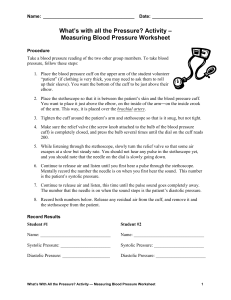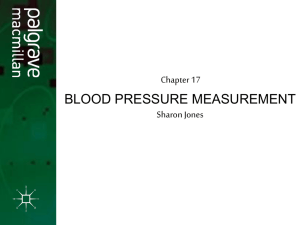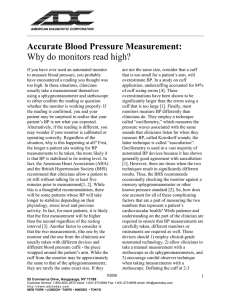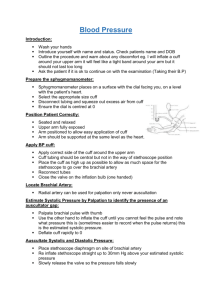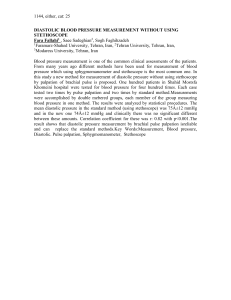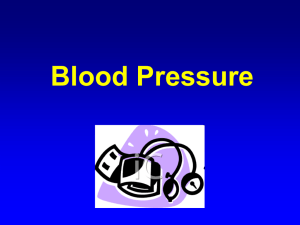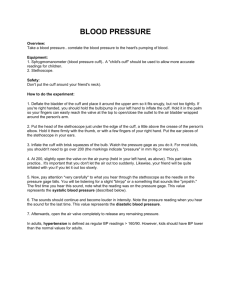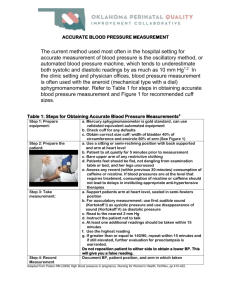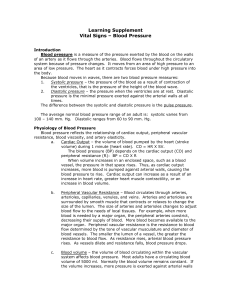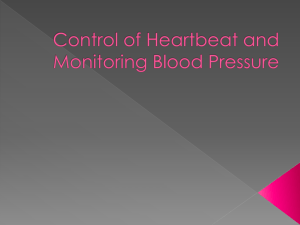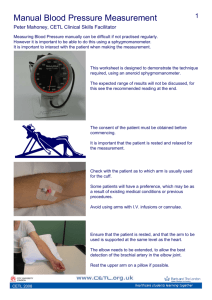File
advertisement
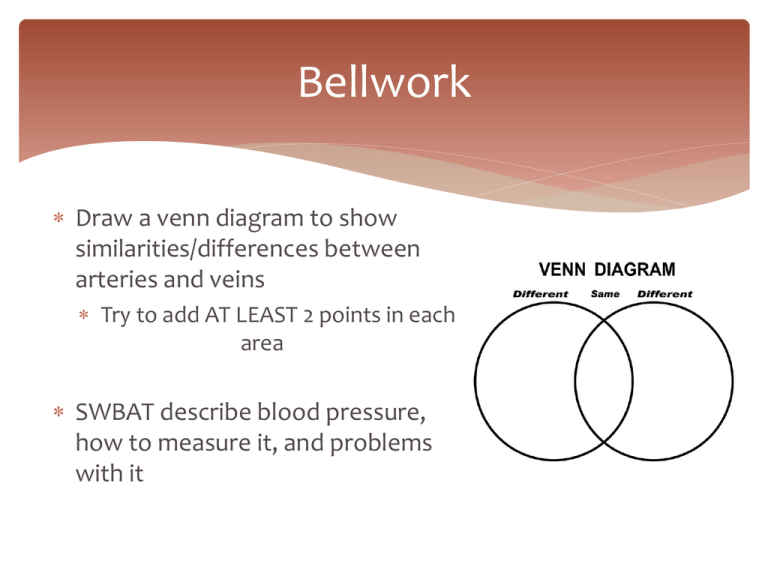
Bellwork Draw a venn diagram to show similarities/differences between arteries and veins Try to add AT LEAST 2 points in each area SWBAT describe blood pressure, how to measure it, and problems with it Blood Pressure Basics What is blood pressure? The pressure that your blood exerts against your arteries as it is pumped through your body by the heart Pressure in the arteries increases when the heart beats and decreases while it is resting http://www.cdc.gov/bloodpressure/about.htm Measuring Blood Pressure The Sphygmomanometer The Sphygmomanometer is also called a Blood Pressure Cuff Dial Used to read blood pressure Pump Inflates the cuff to stop blood flow Valve Lets air out of the cuff, allowing it to deflate Cuff Used to temporarily stop blood flow http://upload.wikimedia.org/wikipedia/commons/b/b9/CM-106.jpg Measuring Blood Pressure The Stethoscope A stethoscope allows you to hear your heart beat and your blood flow When used with a sphygmomanometer, you can hear the blood flow through your brachial artery, allowing you to measure your blood pressure http://wakemedvoices.org/wp-content/uploads/2011/09/stethoscope.jpg Measuring Blood Pressure Procedure Sit comfortably with arm supported at heart level Snugly wrap the sphygmomanometer cuff around the upper arm, one inch above the elbow Place the stethoscope just above the crease of the elbow Pump the cuff to around 180-200 mmHg While listening with the stethoscope, slowly open the valve to let the pressure fall • When you first hear the beat of the blood flow, that is the systolic pressure • When you last hear the beat of the blood flow, that is the diastolic pressure What You’re Hearing Reading Blood Pressure Blood pressure is measured in mmHg, and given as a fraction 120 80 Systolic Pressure Pressure in the arteries while the heart beats Diastolic Pressure Pressure in the arteries while the heart rests Variations in Blood Pressure Abnormally low blood pressure: hypotension • There is not a specific blood pressure value that is considered ‘low.’ • Symptoms define whether blood pressure is too low: Dizziness Blurred vision Nausea Fatigue Abnormally high blood pressure: hypertension • Any blood pressure reading greater than • Usually asymptomatic . 140 90 Hypertension Caused by both hereditary and behavioral factors • • • • • Diabetes High-sodium diets Smoking Age Genetic factors There are usually no symptoms of high blood pressure, but the consequences of untreated hypertension can be severe: • • • • Heart disease Heart failure Kidney failure General heart/artery damage Where are you? Sit comfortably with arm supported at heart level Snugly wrap the sphygmomanometer cuff around the upper arm, one inch above the elbow Place the stethoscope just above the crease of the elbow Pump the cuff to around 180-200 mmHg While listening with the stethoscope, slowly open the valve to let the pressure fall • When you first hear the beat of the blood flow, that is the systolic pressure • When you last hear the beat of the blood flow, that is the diastolic pressure Video
